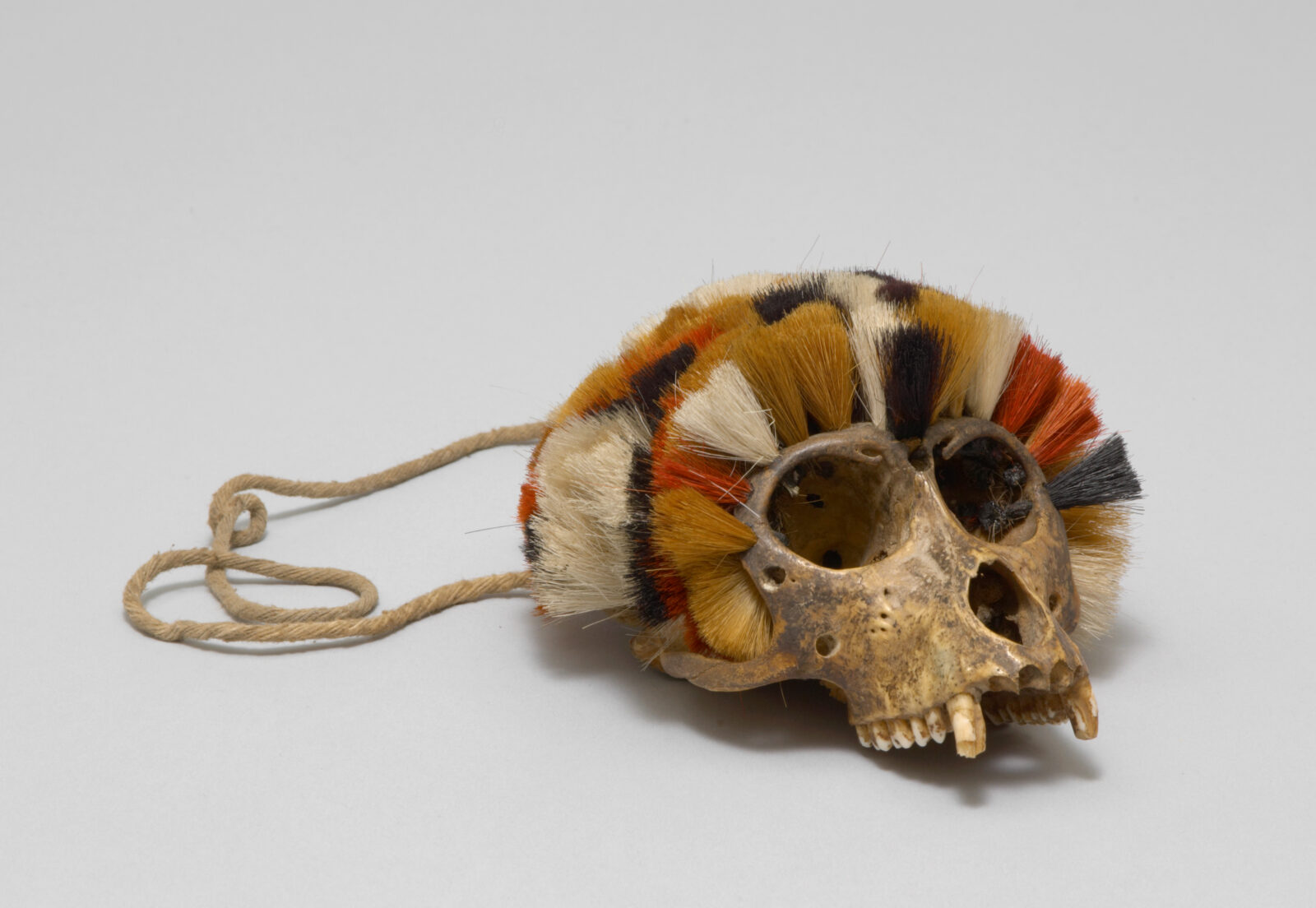Fiercely ModernArt of the Naga Warrior
Rubin Museum
150 W. 17th St., NYC

Chest Ornament Longmien, Assam, India (Konyak Naga) Goat hair, skull of a hanuman langur
(semnopithecus entellus) Museum für Völkerkunde, Vienna Coll. Christoph Fürer-Haimendorf, 1937 (Inv.
Nr. 126.779)
Naga describes a group of culturally and linguistically linked, but distinct tribes living on the border between India and Burma. Because the Naga had the reputation for being fearsome headhunters, they were somewhat isolated and evolved a distinctive material culture. They produce decorative ornaments, expressive wood carvings, and vividly colored textiles. The exhibition, from the Weltmuseum Wien in Vienna, includes examples from one of the largest and most important collections in the world.
